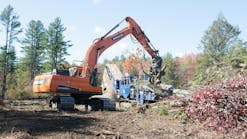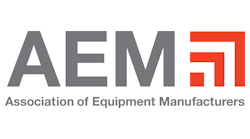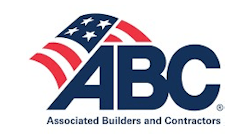Fleet Management Part II: Software and Systems for Equipment Tracking and Asset Management
March 1, 2002
Sound purchasing decisions are especially critical in the heavy-construction industry, where just one piece of equipment can be a major investment. Now, thanks to a variety of software programs, fleet managers have access to information once impossible to obtain. They know when, where, and how each piece of equipment is being used, 24 hours a day. As a result, managers can focus more on preventative maintenance (PM) and less on repair maintenance. They also know whether it’s time to replace a particular piece or whether it’s more cost-effective to take on a major repair. Fleet management software is useful in many aspects of a business–from inventory management to bid preparation.The right software program can help a company’s corporate structure know what’s actually going on in the field, no matter how many projects the company has going on at the same time. Noting that his company has 200 major pieces of equipment, representing an investment of about $25 million, Chris Mangum, chairman of The Mangum Group Inc. in Raleigh, NC, comments, “Our software program puts us in much closer communication with our fleet. The first thing each morning, I can look back at my fleet and see how many hours each machine ran and get an update on the exact location of each piece.”Mangum gets his information through a system developed by FleetEdge, a spinoff company of The Mangum Group. FleetEdge also furnishes fleet management information to a number of other contractors.“In the first few months,” he relates, “we had at least three occasions where we saved an engine or transmission because we’d chosen to monitor engine coolant temperature, engine oil pressure, and hydraulic oil temperature. When there is a violation in any one of those three systems, within a matter of minutes I’m notified over my pager, e-mail, or cell phone.” Each incident helped the company avert a $12,000-$15,000 repair.One occasion involved a paver that sent an engine coolant temperature alert. “I had a supervisor in the area, and he immediately went to the site. The paver had been pushing a loaded dump truck up the hill when the overheat light came on. The operator stopped to let it cool, but the added benefit came when the supervisor let the crew know I knew there was an overheat problem.” Corporate vigilance helps ensure diligence in the field.Mangum continues, “With this software we know the true ownership costs for each component of our equipment fleet. We can compare one machine against another in the same classification and determine whether we have a dog in the fleet. We know when it’s time to trade it out rather than repair. The system makes it possible for more people to know the fleet intimately. A company may have one or two people who know the fleet well, but if they retire or have a tragedy happen, then you lose your knowledge base. The FleetEdge systems help us a secure knowledge base.”Because the program includes a global positioning system (GPS), Mangum also knows where each piece of equipment is day or night. “It helps eliminate unauthorized use as well as theft. Furthermore, late crew starts are not as common. When people know you’re looking, they change behavior.”FleetEdge President Glenn Matteson comments that his company opened its doors on February 2001 after two years of building its products and service. “Most of the issues we’re designed to chase involve long-term owning and operating costs. It takes from three months to a year for results to come through on the financial side. With our parent company, we’ve been able to eliminate 20% of their fleet because the machines either were not used enough or cost too much per hour to operate. For example, they typically will keep an excavator for a decade but [with FleetEdge] were able to identify a three-year-old machine with extremely high operating costs.”Furthermore, Matteson emphasizes, “Fleet managers can look at cost, utilization, and productivity. It’s a matter of measuring those three components to decide whether to keep or dispose, or own versus rent, even between which make and model to acquire.”Software programs and sensor installation also have fairly short learning curves. “Even low-skilled mechanics can do it,” Matteson states. “They see it done once, do it once with our tech, then we get out of the way and let the mechanic install the sensors in the rest of the fleet. The only sensor problem to surface so far was a loose wire, which took about five minutes. The equipment can tell which sensor is misbehaving and whether the black box is transferring information. Yet the cost is a monthly fee that includes cellular or satellite time.“Besides the black box, we tie into the contractor’s accounting system. When they close their books each month, we’ve written a program that exports the cost information, which we put into a Web site report they can access instantly.” Thus, not only can such a system let a contractor know where each machine is at all times, but he knows what each piece is costing over time.James Bryant, chief financial officer for general contractor W.L. Hailey in Nashville, TN, another FleetEdge user, comments, “We are able to fine-tune our rates because we have more information thanks to this software.” He notes that for the first six months the software was in place, the focus was on gathering information. He also stresses that each company needs to build its own base to use as a measuring stick. As with Mangum, not long after the first transponder was installed, it sent an alarm by e-mail. Bryant credits the alert with possibly saving an engine.“I think, though, we are just hitting our stride in finding what’s important and what isn’t. We can individualize the information for each piece, then tailor that information to our needs. Last November only three division managers had this knowledge, but by February there were 30 people armed with this information. With more of us knowing what’s going on, we can make better fleet management decisions than ever before,” Bryant asserts.Regarding advice for companies considering a software program purchase, Bryant suggests, “Look for independence and a product that can serve all of your machines, not just a particular model or brand. You can get in a bind if you’re not careful. Whether it’s information or machines, you want keep your suppliers independent.”Tracking TrucksIn West Palm Beach, FL, Rinker Materials Corporation has a fleet of more than 850 mixers and 200 block-delivery trucks supplying Florida contractors. Rick Eifler, systems coordinator, reports that software and GPS not only help him track all those vehicles, but he’s also able to supply contractors with up-to-the-minute information on the status of their order. “With nearly 70 batch plants in the state, we’re able to keep most deliveries under 20 miles. Still, contractors need to know where their materials are relative to the delivery process, and we need to know whether our trucks at sitting on the job or in the middle of work.”Eifler’s information comes through Wireless Data Solutions’s subsidiary Dinet of Oceanside, CA, a manufacturer of mobile data terminals and associated peripheral-type software. “Our target market is the ready-mix concrete and construction, aggregate, sand, and gravel operations,” says Bob Chase, president. “Our units interface with existing RF [radio frequency] wireless systems, and no driver intervention is needed to let the dispatcher or fleet manager know when the vehicle left the plant and arrived at the job, its location inside the job site, or whether it’s returning.“[Moreover,] if there’s need to divert a vehicle from one point to another, the dispatcher can send an alphanumeric message to that truck. With such software, a batch-plant operator can save 20 to 30 minutes per day per vehicle. That translates into significant savings that go right to the bottom line.” He adds that the return on investment is six to 12 months and that, in the last dozen years, his company has put more than 20,000 terminals in service. “Complete dispatcher and driving training can be done in a two-day course, and we also have a 24/7 phone help desk and make call backs within an hour with our Extended Service Program,” Chase reports.Qqest Software Systems in Salt Lake City, UT, is an industry supplier offering flexible fleet management programs since 1994. “Industry people don’t have a lot of time to set up their software,” observes Dawn Corrigan, who handles documentation and public relations at Qqest. “They want something that they can learn quickly and is easy to use and manage. Though it does take time at the outset to set up the data, if setup is done well at the beginning, our system takes very little maintenance time and automatically schedules preventative maintenance. It also performs tire tracking, warranty tracking, and asset depreciation and inventory tracking and includes a simple budgeting tool.”“Ease of use is the main focus,” agrees Grant Christensen, a Qqest representative. “There’s just a two-week learning curve when someone isn’t real familiar with computers. Fleets with as few as five pieces of equipment find it a cost-effective program, but we can readily track up to 250 to 350 pieces or more. Our average user probably tracks 35 to 45 pieces. The longer a company has the program, the better the data collection should be. When selecting a program, a fleet manager should look at the vendor’s years in the industry, as well as ease of use. There’s no reason why you should need any extensive training in the program; reviewing the manual should be enough.”
Manufacturers to the ForeCase Construction North America is just one example of equipment manufacturers also getting involved with helping equipment buyers utilize software to maximize the utility and service life of their purchases. John Marshall, director of product-support after sales with Case in Racine, WI, states, “FleetLink [in-vehicle communications unit] allows you to manage your fleet from a centralized location, therefore managing it much more efficiently. As long as you know how to operate an Internet browser, it takes just minutes to become comfortable with the program. The value is in the efficiencies you can achieve. The more complex your business, the more the software helps you manage your fleet. You’ll spend less time looking for equipment, be able to identify underused equipment, schedule preventative maintenance ahead to avoid time crunches, and schedule timely replacement. All in all, our program helps you run a leaner, more efficient fleet.”From a Service Manager’s PerspectiveWhen it comes to software, one of the major Intermountain West players is Ellen Equipment Corporation in Aurora, CO. Says Mark Tobyas, general aftermarket manager, “We cover Colorado, New Mexico, and west Texas, facilitating close to 4,000 different contractors. Their fleets range from a single unit to nearly 200 pieces.“By facilitating a fleet management system, the contractor can focus on moving dirt while his dealer takes care of the machine. The arrangement helps him avoid downtime as well as build a service history that will give him a 2% to 5% advantage at trade-in. With a $50,000 machine, that 2% to 5% is quite a bit. Also, the customer has a product that the dealer wants to buy because the dealer knows the history of the machine.”Thanks to GPS, dealer service techs know where to find the machine for a customized maintenance interval (CMI) without ever having to contact the customer. “For instance,” relates Tobyas, “my service manager in Aurora had a unit at the base of a mountain 20 mi. away on Interstate 70. The machine actually was over the hill from the rest of the machinery at that same site. It could have taken the service tech 30 to 45 minutes to find it once he got there, but with FleetLink, he knew within five feet just where the machine actually was, so he kept driving until he got to it. Our techs will do five to 10 CMIs daily, and the time saved in locating equipment can be significant. It is so significant that Ellen Equipment puts the transponders on the equipment at no charge–providing the contractor signs a multiple-year service contract. We recognize we will recoup our expense within 24 months and give our contractors what they’re asking for. The software helps us improve our service level.”A Fleet of ProgramsManaging the machine is but part of the pie, declares Joe Davison, software production and estimating consultant for Caterpillar Inc. in Peoria, IL. “Software helps customers select which machine will give them optimum production and lowest cost. These programs help customers know when to buy, when to sell, or whether to take the machine in for a major repair. Software helps machine owners determine when the cost of operating that particular machine outweighs the revenue it generates.” There are also programs to help decide whether to rent or lease instead of own.“Software programs enable users to better maintain equipment, which makes the machine last longer,” Davison maintains. “They also allow users to compare machines and make sure they’ve got the right product for a particular operation. Software helps dealers and customers talk together, enabling the salesman to be more of a consultant because he knows exactly what that customer needs.”Aggregate User Finds Success With SoftwareWhen Daniel Francisco joined Rockville Crushed Stone in Rockville, MD, in 1993, he found the DOS program the company had in place insufficient because of network problems and communication issues. “From there we went to an AS400-based program, but one of our biggest problems as a manufacturing plant supplying 2 million tons of aggregate to the metro-Washington area annually was not being able to accurately track the cost performance of each of our vehicles.”Then in 1996, this subsidiary of Aggregate Industries, a UK-based company, acquired TMT Software, a fleet management entity. According to Francisco, “One of the key things was networking and useful reports that field managers could use. One of the biggest plusses is that the user-friendly program tracks fixed as well as mobile assets. It also tracks our costs at the field site. Third, the software gives us cost-performance reports based on cost per hour.”After more than a half-dozen years with this program in place, Rockville Crushed Stone has a database that lets them know how each element of their fleet of 15 trucks, graders, and loaders is performing. “We have the benchmarks and can identify underperforming assets,” points out Francisco. “For instance, tires are a major cost for us. Thanks to the software, we know better whether a particular piece of equipment should have radial or bias tires. With a single tire costing 11 grand, reducing tire costs 15% is a significant savings. Plus, we have reports that tell us hours performed, fuel cost, PM costs, regular repair costs, and whether we’re meeting the cost of production goals.”The company’s machine-life goal is 110% of manufacturer life. “We buy premium oil because we’re putting machines in a lot of stress, so oil sampling is part of our field reports. Then we’re able to pull reports and show costs per hour in all elements. If the average for a particular loader is $25 per hour and this one is running $30 per hour, why? Transmission? Cylinders leaking? Repairs commensurate with age? If so, then we know it’s time to retire the machine.”Warranty tracking is another software advantage. “For instance,” Francisco explains, “if the drive train carries a 90-day, 1,000-hour warranty, we’ll window tag it. Next time we’re working with that component, the flag shows. This gives us documentation of when we replaced that warrantied item, both in hours of use and length of ownership. Software also helps us track down problems. For example, we had a loader failing on tires due to excessive blowouts. We found this loader was moving less than 50 feet, but heat built up in the bias tires as they went back and forth across the yard. So we switched to radial, and costs dropped back into line.”Ditto for buckets and other wear items. Francisco adds, “By building a service history from cradle to the grave, we’re able to make good decisions. We work our machines more efficiently, have more uptime. We’re not pushing machines over the limit, but close to the point of getting 100% of what we paid for out of those machines.”Because PM is a major concern, parts inventory has been extensive. “We’re able to keep our parts inventory down. Companywide, thanks to our software, we’ve cut the parts inventory from $987,000 to $565,000,” he notes. “No longer do we have the same item with three different parts numbers. No longer do we have parts for assets we’ve sold. We’re managing our inventory more cost-effectively.”As with others who have successfully made the switch to fleet management software, communication is prime. “You have to communicate; publish reports and circulate them down to the field level. You have to work with accounting on what machines are out there, what they do, and what these reports mean. Corporate management and field management have to communicate to get the most out of any software program,” Francisco stresses.Inventory Support“A company that has a fleet of vehicles to support with its own maintenance crew needs an inventory that will support the maintenance program,” contends Bill McKinley, parts marketing support manager for International Truck and Engine Corporation in Warrenville, IL. “What we have is a very simple inventory management system. International’s system is designed to ensure that the contractor avoids running out of parts, losing parts in inventory, or having unneeded parts.”This takes work, of course. The dealer comes to the fleet’s location and helps get the parts inventory organized. “This takes cleaning up, straightening up, purging all dead parts, assigning bin locations, and doing a complete analysis of all the data behind the parts. You want to get the right number, description, supplier, and bin location all loaded into a simple database. Once all loaded, and you have a final count on hand, then you produce barcode labels for all inventory. After that, no parts move without being scanned, either out to the service bay or onto the shelf,” asserts McKinley.Termed Diamond Connection, this inventory system can be learned in just 15 minutes, McKinley explains. “Our International Truck dealers automatically dial up customers after hours and find which parts have been used that day. The customer doesn’t have to do a thing. The dealer automatically replaces the needed part on a regular basis. This virtually eliminates stock-outs and minimizes downtime waiting for parts.”Diamond Connection Product Manager Bill Finn points out, “As long as you’re willing to track inventory, it’ll manage any commodity, including toilet paper and office supplies. Diamond Connection can be a total inventory management program for the complete operation, not just the fleet alone.” Then he adds a note of caution: “Many have great initial enthusiasm for the system, then sit back to let it run itself. Management has to make sure the shop personnel using the system are diligent about operating it the way it was designed.”McKinley and Finn both see International’s inventory management software system as providing a new paradigm for dealer and contractor. “This is a win-win [situation] because the dealer becomes almost a business partner with that fleet customer,” Finn concludes. Adds McKinley, “Some of the greatest successes include fleets running our competitors’ trucks. This inventory management system works for anybody!”Extending Service LifeAnother longtime software user is Martin Stone Quarry in Betchelsville, PA. Trevor Martin, a third-generation member of the family operation, reports that the company runs 20 hours a day, five days a week, and from 5:30 a.m. to noon on Saturdays. “We have 100 pieces of equipment, including a Cat 992 loader, a D-8N dozer, five 50-ton Terex haul trucks on the bigger end, down to pickups, skid loaders, et cetera. Our biggest challenge is tracking costs of individual units and keeping a maintenance history so we scan schedule PM before breakdowns and catch repairs before a component failure.”Part of Martin Stone Quarry’s strategy is to send machines back for a factory rebuild. “We’re getting the old machines back with new parts for 60% less than a new one would cost,” maintains Martin. “One loader has been rebuilt twice and now is more than 20 years old. Best of all, along with any rebuilds come enhancements, including upgraded hydraulics and the latest version of components. When you’re buying a big machine, you’re buying a big chunk of iron. All that iron doesn’t deteriorate much, but keeping a good iron core and replacing the moving parts can help save dollars.”Assisting Martin in this effort for nearly a decade is the Dossier System fleet software from Arsenault Associates of Atco, NJ. “It’s simple to learn, to get the basic responses from the system. But as you get to know the software better, you can find lots of other options in there to help do the work.” As with other uses, Martin uses his program to coordinate PM for both mobile and fixed assets. “We coordinate downtime on machine and plant to assure maximum production. Before, we were doing it on demand, rather than planned, which didn’t help anybody.”Still, Martin emphasizes the need to take the time to analyze the available data. “Each month I look at data reports for each piece, including tire expense, hydraulic expense, wear items–all the major expense categories. Each month shows me the month cost, year cost, and life cost of each piece. If I find an identical piece that’s cost quite a bit more than another, then I know I’ve got either a lemon, operator abuse, or some undiagnosed problem that causes that machine to run more expensively.” He emphasizes that although the software gives the data, the user still has to decide what to do with the information.Arsenault Associates is one of the founding firms in the fleet and equipment maintenance management software industry. Charles Arsenault’s firm has worked with more than 3,500 fleets that operate 400,000-plus pieces of equipment. “The key is not just tracking costs,” Arsenault emphasizes. “It also has to do with maintenance histories so you don’t repeat them. Software enables you to schedule PM so you will be able to operate that equipment with minimum downtime, stay within manufacturer warranties, and operate at least-possible costs. With a true fleet management program, you should be shooting for a 5% to 10% cost reduction with scheduled work becoming 80% of all work performed.”Arsenault, himself a former fleet manager, underscores a key reason for fleet management programs: “Every dollar of savings in maintenance is pure, no-cost, bottom-line profit.”








